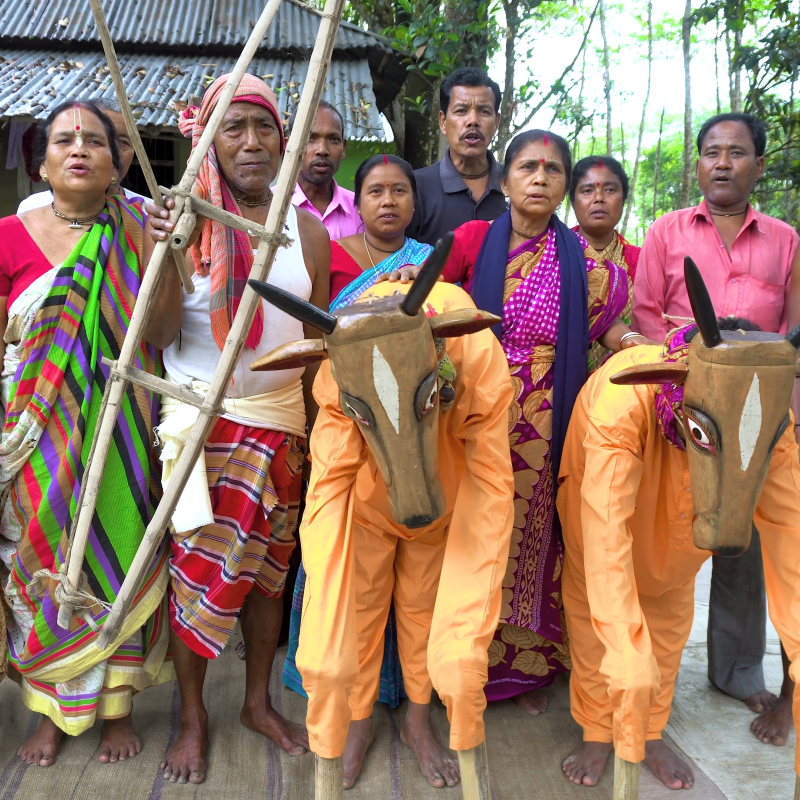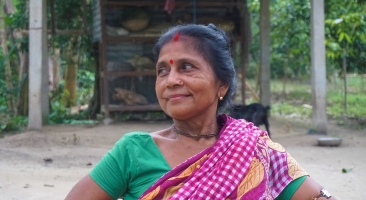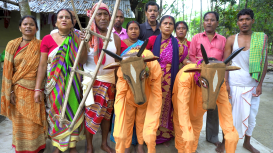Folk theatre in Bengal has a rich legacy and it continues to blend components of music and drama to create a performative space that attracts large audiences in the districts of Bengal. Khon is a satirical folk drama tradition of the Rajbanshi community of North Bengal, also known as Deshiya Poliya, who mostly reside in the different blocks of Dakshin Dinajpur and Uttar Dinajpur, ranging from Kushmandi and Banshihari to Gangarampur and Harirampur. The indigenous art form of khon can be found in greater Dinajpur and the northern part of the Malda district of West Bengal. This musical folk drama is a community performance and is interlaced with elements of theatre, song and dance.
Essentially, the word khon, in Rajbanshi, comes from khonik (moment) and stands for episodes in the life of the Rajbanshi community. Khon is a fictionalised/dramatised account of real-life incidents, especially those involving illicit love affairs, clandestine love, scandalous events and criminal cases. Khon is an oral tradition and is dominated by dialogues in the local dialect of the Rajbanshi community, which is a mixture of Kamrupi, Varendri and Bengali. A Khon performance essentially holds up a ‘mirror’ to life in Dinajpur as it broadly reflects the different events in the lives of the farmers and daily wage labourers of the Rajbanshi community.
Over time, khon has undergone a major transformation from a ritualistic performance based on the Puranas and other religious texts to a non-ritualistic performance based on social issues. Initially performed only by men, who would double up to play the role of women with the help of make-up and women’s attires, things gradually changed as society evolved, and now women find equal representation in a khon performance. In fact, there are groups such as Mohisbathan Narikalyan Samiti, founded by Akulbala Sarkar, the first woman khon performer, which is made up mostly of women artists.
Government initiatives and funding, over the years, has helped khon become more sustainable for its performers, many of whom now receive pensions. Due to its popularity in Dakshin Dinajpur and nearby areas, khon is often used by the government to disseminate information about government schemes, diseases, social issues, etc.



